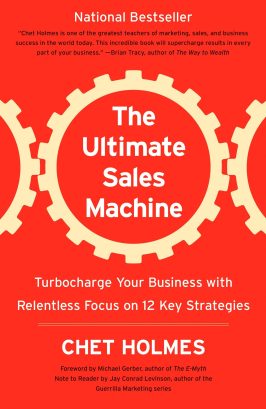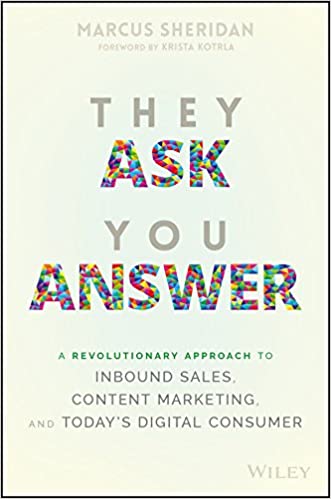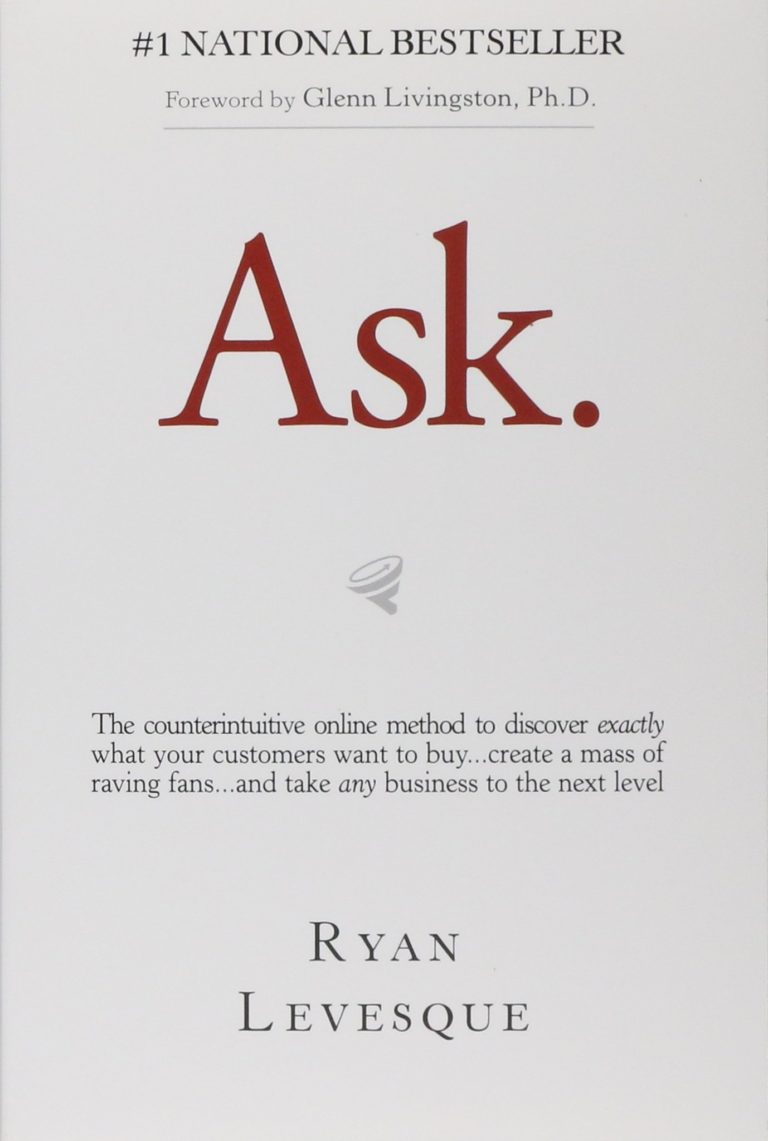In his book The Ultimate Sales Machine, Chet Holmes claimed that these are the only 12 steps we need to repeat 4,000 times to grow our business like crazy.
This is the same guy who successfully worked for the billionaire Charlie Munger.
Let’s discover what these principles are, and how they apply to Content Marketing in 2022.


!Disclaimer. Some of the links throughout the blogpost are affiliate links and I will get a commission if you purchase through them, at no additional cost to you.
Here’s a more concise video version 🙂
Book Table of Contents
Opening Credits (02:29)
Foreword (03:09)
Preface (08:23)
Introduction (13:41)
1. Time Management Secrets of Billionaires.
How to Maximize Your Productivity and Help Your People Do the Same (29:36)
2. Instituting Higher Standards and Regular Training.
Preprogram Your Organization to Run Like a Finely Tuned Machine (36:26)
3. Executing Effective Meetings.
How to Work Together to Improve Every Aspect of Your Company Using Workshop Training (44:55)
4. Becoming a Brilliant Strategist.
How to Get Up to Nine Times More Impact from Every Move You Make (46:19)
5. Hiring Superstars.
How to Accelerate Your Growth by Using High-Octane Talent at Every Level (49:43)
6. The High Art of Getting the Best Buyers
The Fastest, Least Expensive Way to Dramatically Increase Sales (34:32)
7. The Seven Musts of Marketing.
Turbocharge Every Aspect of Your Primary Marketing Efforts (01:25:45)
8. The Eyes Have It.
Attract and Close More Buyers by Using More Compelling Visuals, Plus the Biggest Mistakes Everyone Makes When Presenting (39:59)
9. The Nitty-Gritty of Getting the Best Buyers.
Step-by-Step, Day-by-Day Tactics to Land Your Dream Clients (47:57)
10. Sales Skills.
The Deeper You Go, the More You Will Sell (38:22)
11. Follow-up and Client Bonding Skills.
How to Keep Clients Forever and Dramatically Increase Your Profits (33:59)
12. All Systems Go.
Setting Goals, Measuring Effectiveness, and Activating Your Master Plan (38:29)
Decision Process

Here are a few things that may convince you this book is worth reading ( At least they helped convince me 🙂 )
-Suggested by Russell Brunson in his book Traffic Secrets
-Popularity (By ratings on Amazon) – Although sometimes it’s just a manipulation, many times popularity comes with quality.
Also, in his book, Russell Brunson said that Chet worked with the Billionaire Charlie Munger (Warren Buffet’s right hand man), and made astonishing results while working with him, meaning he is a high achiever. Sounds to me like a guy worth listening to. 🙂
Book Attributes
Author
Chet Holmes – Founder of Chet Holmes International. Acclaimed corporate trainer, strategic consultant, motivational expert, and lecturer. Whose clients included 60 of the fortune 500 and countless small businesses world-wide before his premature passing in 2012.
Length and Publication Date
Length – Physical/Audio: 272 pages/9h 13m
Publication Date: Published on 2007 with a Reprint and Audiobook version on 2008
Reviews
There are 1,092 Amazon.com reviews as of writing this post.
79% of which is 5 Stars.
and 11% 4 Stars.
Introduction
This book is about 12 Steps to excel at any business. My goal was to see whether it still applies today for content marketing, 14 years after it’s publication.
Therefore, this summary is my interpretation of the book and not just raw contents.
12 Key Strategies to Turbocharge Your Business
1. Time Management Secrets of Billionaires


Chet says he gives us 100% working 6 steps to improve our time-management. The question is: will we apply them?
Here are 3 of those steps:
1. If you begin a task – finish it. Don’t spread it over a few days. Checking email (or comments) are good examples, don’t start reading until you know you have the time to attend to it.
2. List your tasks and prioritize them. Because unless you do, you will end up doing the easy ones.
3. Plan the time required for each task.
2. Instituting Higher Standards and Regular Training
This chapter is mostly for people who have employees. Nonetheless, here’s my interpretation of it for individuals.
Probably the most important thing here is to write a detailed description of the jobs you’re doing so that if you pick someone from the street they’ll be able to perform your jobs by reading what you wrote.
That process is called business systems, and here’s an awesome book about it: The E-Myth Revisited
Another is: Write some questions about performing your sales process and answer them in a week from now,
this way you’ll make sure that you gradually apply them.
E.G.
Q: How long should my blog post be?
Q: How often should I stop reading the book to summarize?
“Once you recognize that the purpose of your life is not to serve your business, but that the primary purpose of your business is to serve your life, you can then go to work on your business, rather than in it“
3. Executing Effective Meetings

Here are 5 steps for system improvement meetings:
1. Appoint a meeting leader
2. Write a focus question on the board
3. Give the participants 2-3 minutes to come up with ideas-solutions.
4. Give the participants 30 seconds to write down the 3 best solutions in their opinion.
5. Make a vote for which one to apply.
Next Comes Execution.
What if I’m a lone content creator? – Every week make sure that your systems are up to date and that you actually follow them (Read the steps and think if you’re actually doing them), then – Improve them by making a list of problems that you have in the systems and choosing the most important one, then brainstorming solutions for it.
"Do you want to have your people trying to figure out how to fight while they're on the battle field? Or, do you want to role-play the heck out of them so that when they get into battle, they are skilled and prepared?"
4. Becoming a Brilliant Strategist
The Core story/Stadium pitch.
Imagine yourself in a stadium full of your dream customers, which are free to leave at any moment if they’re uninterested. What are you going to say?
According to the 3% Rule from Sticky Branding, only 10% of the market are ready for a change in any market.
So if you start with your product as the headline, 90% will leave immediately.
That’s why a good idea would be to start with something that interests everyone, and slowly build from there.
Example: “This 1 thing was associated with households with over 100,000$ yearly income”
And then continue: They had twice more books than households with income of 35.000$ or less. (Source)
"Sales is all about building rapport, not breaking it. When people feel they're being sold they automatically resist you. When people are educated - they have no resistance, especially if the information is good."
5. Hiring Superstars

Hiring someone must be a thing that´s over my head…
Many entrepreneurs think “My business is different and can´t be delegated”, and so did I, but, as long as you work on your systems (Again, check out The E-Myth Revisited) you will, with time, get clear on what tasks exactly you’re doing and be able to explain it to someone else in detail.
Once you do that, you will know exactly how to guide someone to do the tasks that are valuable to you and pay them less than you earn from it.
Note: Tim Ferriss and Allan Dib suggest in their books The 4-Hour Workweek and The 1-Page Marketing Plan, outsourcing to someone from abroad.
6. The High Art of Getting the Best Buyers
In every market there are a few buyers or influencers who are responsible for most of the purchases. What would Chet do to get their business?
Tip 1: Direct mail and gifts. Send them direct mail and gifts like Rubik’s Cube or Calculator that tie into messages from your core story – “Calculate how much you’re losing in your battle to dominate”
Tip 2: Follow-up. Anyone could be reached with enough follow-up. For Chet it took him 2 years of every-week follow-up to reach Jay Abraham, but it was all worth it.
Tip 3: Referrals. Partner with complimentary businesses who’s clients might need your services, and offer those businesses money for every client that they bring to you.
"The riches are in the niches, but the fortune is in the follow-up"
7. The Seven Musts of Marketing


Here are 3 of the 7 marketing principles that you need to master to be the best in your field.
Marketing weapon 2. Direct mail – Use color and curiosity messages outside the envelope to get it opened.
Marketing weapon 4. Public relations – Get attention in other medias by having a great core story and follow-up.
Marketing weapon 7. Internet. The internet in a nutshell – Leads>Relationship+ Many Interactions>Webinar>Sale.
For the first step it’s very effective to have an “Opt-in or leave” landing page. Here´s an example of 1 such page
"Let's say you were driving down the street and see a ... billboard with giant words that say "Save Time, Save Money" ... would that mean anything to you? No. ... That billboard needs to say "The oil that you only need to change once a year" "
8. The Eyes Have It
This chapter is called “The Eyes Have It” because when we see a presentation we connect to it a lot more than just hearing it. So always plan visuals in addition to speech.
3 of the 8 Rules for effective presenting
Rule 1) K.I.S.S. – Keep It Simple Stupid – Keep only very few things in sight
Rule 2) K.I.F.P. – Keep It Fast Paced – Keep it moving, don’t stop on 1 screen or image for more than 15 seconds.
Rule 3) Use “Wow” facts and statistics – In 1940 – 1 in 20 women were at risk of breast cancer vs. in 2007 – 1 in 8 women. (Company of anti-environment-toxins supplements). Include a graph or image to illustrate it.
9. The Nitty-Gritty of Getting the Best Buyers

As briefly stated in chapter 6, Chet used to send direct mail with gifts to his “Dream 100” or Best buyers.
This chapter is where he gets into detail.
I haven’t yet done this but Amazon provides an option to send gifts just by having the customer email
Here are 3 out of 6 detailed steps of the direct mail strategy
1. Choose your Dream 100
2. Choose the gifts – Make sure you send something useful.
3. Create your Dream 100 letters. – Accompany the gift with a letter. For B2C offer great deals, for B2B education.
10. Sales Skills
There are 7 steps to become a better salesman, here are 3 of them
(May apply across all media, not just face to face)
Sales Step 1: Establish rapport.
When buyers become your friends, they’ll feel that they betray you if they go to the competition.
Sales step 5: Overcome objections
Objections are opportunities. Intensify the drawbacks of not working with you or find a solution for the objection.
Sales step 6: Close the sale
Don’t fear putting pressure if you’re sure they need the product. E.G. risk reversal, add free products to the deal.
"If you truly believe that what you have is useful and valuable to your clients, then you have a moral obligation to try to serve them in every way possible."
11. Follow-up and Client Bonding Skills

Follow-up mindset:
-Follow-up costs 6 times less effort for the sale. (1 step in contrast to 6)
-As time passes after the interaction, prospects increasingly forget you in general, and your product in particular.
Actionable tips:
-Build an email list with ethical bribes(E.G. PDFs, short eBooks)
-Gather relevant information during sales steps 1-6(chapter 10) with the follow-up in mind
Chet’s 10 interaction follow-up:
Of course it doesn’t end with 10 follow-up interactions but that’s what Chet helps us set 1 by 1 here.
Here are 3 of them:
Step 1: Send The First Letter
Step 2: Make The First Follow-Up Call ( The contents may be applied in Email.)
Step 3: Share something amusing or of personal interest
"Because what McDonalds knows, and what Federal Express knows, and what Disney knows, indeed what every extraordinary business knows is that the customer you've got is one hell of a lot less expensive to sell to then the customer you don't have yet."
12. All Systems Go.
The first step to achieving your goals is to know what they are and distilling them into long-term and short-term.
However, as important as it may be, writing them will not achieve them. Setting your focus correctly will.
For this purpose, there’s a part in your brain called RAS (Reticular Activating System).
It makes sure that we see what is important to us, and tunes out all the rest.
You could make it bring desired solutions to your consciousness by repeatedly stating affirmations in the evening/morning like
“I am in perfect health” and “I only think positive thoughts”.
Warning: Do not do the exercise without further guidance, this is only an abstract explanation.
People respect what you inspect.
3 Takeaways (Of many)


1. Recording RAS affirmations
After having recorded the RAS affirmations to set my goals (a 17 minute recording), I have already listened to it a few times before bed.
this indeed feels good, the question is, will this habit persist? And I don’t see a reason for it not to. 🙂
Note: If you end up reading the book, pay attention that it guides us to record 10 affirmations, so that you don’t record 5 and have to re-record like I did.
2. Pay Attention to Tonality More Than Words
As I’m listening to this book I have been looking for a video editing job, and have done a few calls on the phone,
while doing it, I remembered Chet’s Tip that sounding confident during a phone call builds a bigger part of the impression than what you actually say. (If you know there´s something useful you can offer – It helps. And let´s be honest, you most probably do.)
3. The Importance of Follow Up
The more I´ve followed-up on the jobs the more serious I´ve felt that I´m being taken. It truly does seem that it´s better to Follow Up on a few rather than look for more and more first calls (Although both might help).
On another note, I´ve realized that I´d probably better purchase an e-mail automation software, because writing 10 follow-up letters manually to each subscriber might take quite a lot of time 😉 (I’m probably going to go with Convert Kit as that’s the one I’m using right now, and will see how it goes with the paid version)
The Ultimate Sales Machine Conclusion

Despite The Ultimate Sales Machine being written quite a few years ago in another era, we may still learn a lot from it, even though perhaps sometimes it might require of us some thinking about how we could further adjust it’s principles to our sphere of business and the current times.
Rating (6 Parameters)
Narration
Clarity of Speech
How clear and understandable was the voice? 5/6
Reason: A very small amount of words were unclear. Maybe 1 or 2 across the book.
Fluency
Were there any gulps, voice jumps? Recording interruptions? The higher the score – The less interruptions. 7/7
Expressing Emotions
How much does it sound as if the narrator was really there?
How attached is he to the sentiment in the story?
And how well does he transfer the emotion to the reader? 7/7
Plot
Is there a storyline? How connected is one Idea to the one before it?
Answer: It’s not a story per se, but the principles do follow quite a logical order. 8/10
Heading Distribution
When I read the heading, can I recall the contents?
Answer: Yup, very clearly 10/10
Drive For Implementation
How much does the book push you to apply it’s contents?
Visuals
Does it use images or other resources to transfer it’s message?
Answer: Almost none in the audiobook. But then, the audiobook version was published in 2008… 2/6
Direct Calls to Action
How often does the author prompt you to apply the ideas in the book?
Answer: Very often 7/7
Providing Actual Specific Details
Can you actually apply the Ideas on the book without additional resources?
Answer: Many things are clear, but some are not whether that is because of the 2008 publishing or The not detailed enough explanations 5/7
Examples
How often are examples provided to explain a point, and how well do they portray the ideas?
Answer: The examples are great as far as they can go in speech or text, but sometimes more visuals and details are required(E.G. DISC exam application). 20/20
Content
How interesting/useful was the content?
Answer: Mostly very interesting and useful, but some things seemed irrelevant at first glance because of the age of book and different target audience than myself (A target audience that starting from product rather than audience, and employers rather than solo creators) 18/20
Final Rating

Narration – 19/20
Plot – 8/10
Heading Distribution – 10/10
Drive for Implementation – 14/20
Examples – 20/20
Content – 18/20
Final Rating – 89/100
Get the Audiobook and 9 others for FREE

Chet Teaches you ... how to tell stories. And he does that in the best way of all: he tells you a story, and then another, and then yet another, and then still another until you feel like he has got to run out, and then he tells you even another story better than the ones before.
Other Freebies/PDFs
Related Articles

They Ask You Answer Review 6 Fully Recapped Parts and 5 Nice Takeaways
The base of all solid relationships is trust – Find out how to build trust with your audience and many other Content Marketing techniques in

Ask Ryan Levesque 5 Quick Concepts and Sincere Rating
Ask – Ryan Levesque. Is there anything special about it? What may I expect to take away from it? Animated Summary The book in a few sentences

Magnetic Marketing – 9 Great Ideas, Not so Great Packaging (Dan Kennedy)
9 Practical Ideas to apply in your Blog/Channel/Content from the book Magnetic Marketing by Dan Kennedy. Animated Summary (Only 5 Ideas) Book Table of Contents
